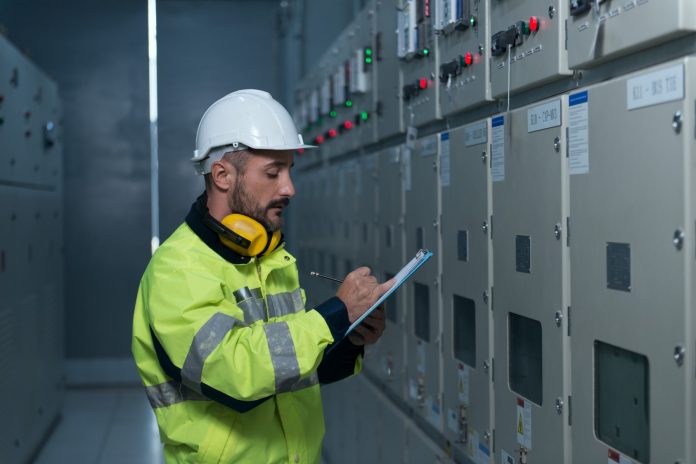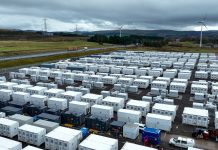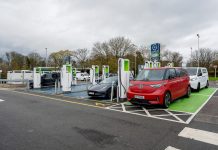By David Bond, Chairman, Centiel UK
Houston we have a problem! The explosion in data. This means datacentres have a problem because they literally burn energy. And, due to the rise in data fuelled by increased online activity such as social media, online shopping and the widespread adoption of Artificial Intelligence (AI) about to revolutionise our technological landscape beyond recognition, we need more datacentres.
One press article in the Irish Times recently suggested that if all the data centres in Ireland seeking planning permission were successful, they would take up 70% of the Irish National Grid. That’s a big problem.
This is the situation today, but what about in five- or ten-years’ time? The developing world will also need to get on the technology bus too, so we must urgently look at ways for the growing number of datacentres to become more energy efficient and accelerate sustainability if we are to aim for anywhere near net zero.
Fortunately, it is in the interests of datacentres to become more energy efficient. According to the Department for Business, Energy & Industrial Strategy (DBEIS) there was a 260% rise in electricity prices between 2004-2021. However, more recently, we have seen even more dramatic increases.
The good news is that sustainability and energy efficiency with the aim of moving towards net zero, go hand-in-hand with reducing costs, possibly for the first time in history.
Reducing energy consumption
Within the datacentre there are a variety of culprits burning electricity. For example: the load itself, environmental controls (air conditioning) and uninterruptible power supplies (UPS). However, how these systems are managed can have a significant impact on their operational efficiency.
For example, if UPS and batteries are located together, more air conditioning is needed because while a UPS can happily operate in an ambient temperature of 400C the VRLA (valve regulated lead acid) batteries must be kept at around 200C to optimise their useful working life. Locating the batteries away from any heat source in a well-ventilated environment will reduce or even negate the need for any cooling.
If it is not possible to physically separate the batteries from the UPS consideration could be given to using Li-ion (actually LiFePO4) batteries which are oxygen free and as safe as VRLA batteries and will happily operate at higher ambient temperatures.
Rightsized for operational efficiency
Modern modular UPS make rightsizing easy for datacentre operators. They can now install large, but empty, modular UPS cabinets and only install enough UPS modules in the cabinet to support the load, “N”, and provide the required redundancy, “n”. By using UPS modules, the UPS can be sized to operate at an optimum point on its efficiency curve, saving considerable OPEX in terms of both operational efficiency and ongoing maintenance costs. CAPEX is also saved as the datacentre operator only needs to buy the UPS capacity they need.
Moving to a culture of sustainability
Up until now, datacentres have needed to install a UPS and replace it at the end of a typical design life of around ten years, causing considerable disruption.
In the past, despite such disruption, upgrading the UPS meant upgrading to better technology. Like buying a mobile phone, you tend to replace it regularly to take advantage of the latest advancements in tech. However, with UPS this no longer needs to happen. Modern UPS systems like StratusPower offers 97.6% efficiency meaning we have now pretty much reached the physical limit of technological advancement. Silicon carbide (SiC) components may offer small operating efficiency gains in the future but their present unreliability makes them unsuitable for use in a UPS whose primary role is guaranteeing power availability.
Fit and forget
So, just like installing cabling, cable trays, switchgear, generators and other electrical infrastructure and expecting it to last for the entire 30-year design life of the datacentre, why not install a 30-year design life UPS too?
Quite simply, a UPS designed to last 30 years hasn’t been available until now! Market forces were centred around driving prices down and not to driving sustainable options up and so it was not created as an option, but now it is.
To aim for net zero we need to shift expectations about the perception of a UPS. After all, in three decades time we will still be using the same 400V, 50Hz electrical supply we were using 30 years ago.
Future Demand
For the past four years, Centiel has been looking at developing a sustainable UPS. The result is StratusPower and due to the high quality of its components, it now offers a much longer design life than any other UPS solution on the market. Instead of replacing capacitors every four years, they will need replacing just once, after c.15 years, during their entire 30-year design life. Quality components cost more but we are talking just tens of pounds per module. To replace the entire UPS system every ten or so years will cost tens of thousands of pounds. Combined with Centiel’s approach to act as trusted advisors, it means Cential can help organisations take steps to move away from a “throw away” culture with a genuinely sustainable offering.
Society now depends on IT and technology so heavily; we must all look at innovative ways for the growing number of datacentres to become more energy efficient and sustainable it the future, like just the few examples illustrated above.
To go back to the slightly misquoted words of Jack Swigert astronaut support crew, during the Apollo 13 mission: Houston we have a problem. This phrase is now often used in popular culture with a sense of ironic understatement. It is so applicable to our industry right now, that if we don’t all work to help datacentres introduce the most energy efficient, sustainable options possible in our datacentres our future generations really will have a problem.
For further information please see: www.centiel.co.uk




